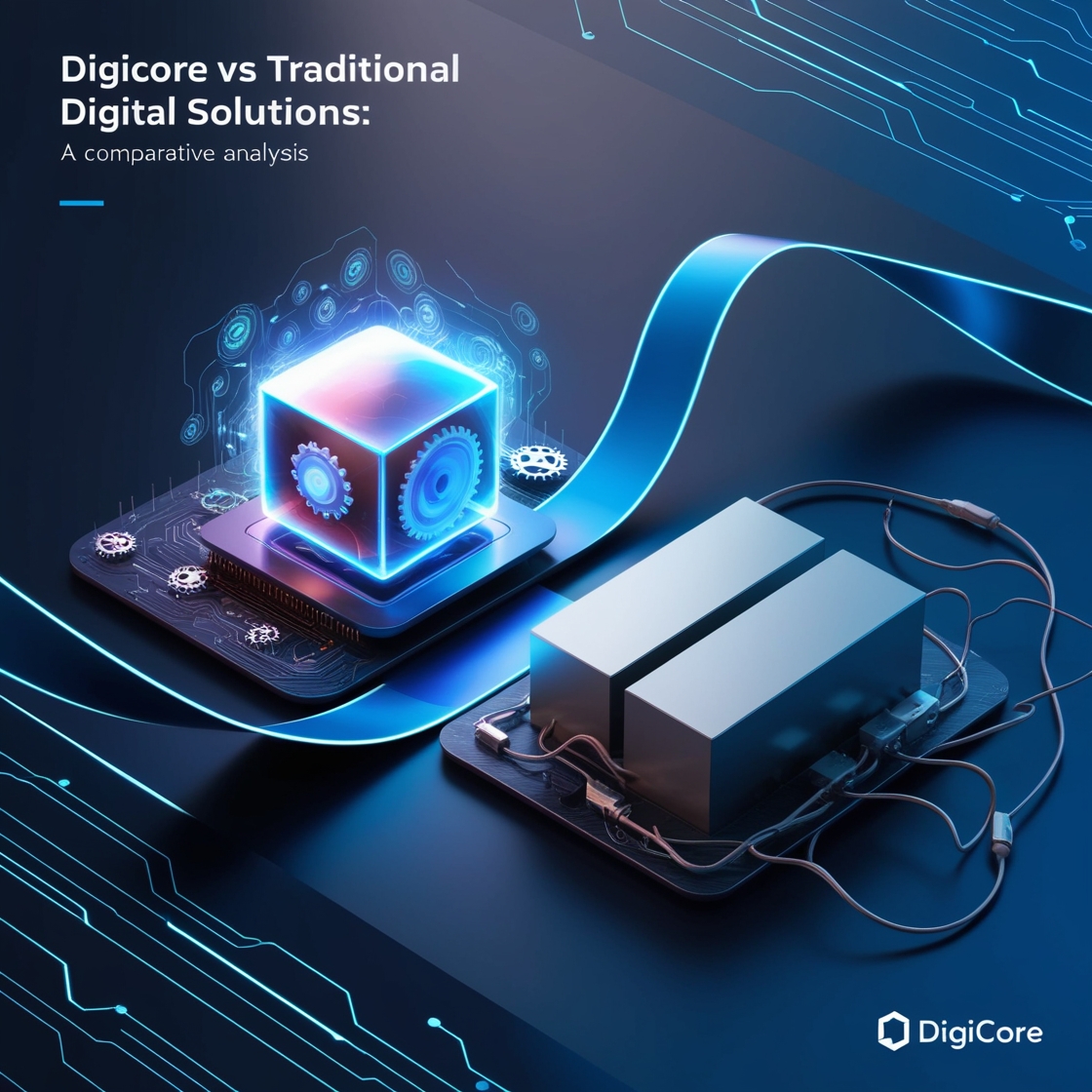In today’s rapidly evolving digital landscape, businesses face an increasing need to innovate and improve their digital solutions. Two primary approaches to digital transformation have emerged: Digicore and traditional digital solutions. While both aim to improve efficiency, streamline processes, and enhance user experiences, their methods and outcomes differ significantly. Let’s break down the key differences between Digicore and traditional digital solutions.
1. Definition and Scope
- Digicore: A relatively new and more advanced approach, Digicore is centered around a holistic integration of technology with an emphasis on core business functions. It combines elements like artificial intelligence, machine learning, data analytics, and cloud computing, creating a more dynamic and adaptable system. Digicore emphasizes automation, real-time data processing, and deep integration with the core aspects of a business, enabling faster and more intelligent decision-making.
- Traditional Digital Solutions: Traditional solutions usually involve standalone systems or digital tools that handle specific business functions, such as Customer Relationship Management (CRM) software, Enterprise Resource Planning (ERP), or basic cloud storage. These systems often work in silos, requiring manual integration or additional customization to communicate effectively.
2. Flexibility and Scalability
- Digicore: One of the defining features of Digicore is its flexibility. By utilizing cloud computing and modular technologies, Digicore systems are highly scalable. They can easily adapt to the growing needs of businesses, allowing for seamless updates and integrations as the business evolves.
- Traditional Digital Solutions: Traditional solutions are generally less flexible. They may require significant investment and time to scale, as they are often built on older, more rigid infrastructure. Customization and updates may involve complex processes and expensive development, limiting scalability.
3. Automation and Real-Time Capabilities
- Digicore: Automation is a cornerstone of Digicore solutions. With integrated AI and machine learning, these systems can automatically perform routine tasks, analyze large data sets in real time, and provide actionable insights. This allows businesses to react quickly to changes in the market and optimize operations efficiently.
- Traditional Digital Solutions: While some traditional digital tools offer basic automation, they often require manual intervention for complex tasks. Real-time capabilities are limited, and the systems may struggle to process large volumes of data without experiencing delays.
4. Integration and User Experience
- Digicore: The integration of various technologies under Digicore creates a seamless user experience. It offers a unified interface where all systems and data sources can be accessed in one place, leading to more streamlined workflows and enhanced user satisfaction. Digicore also focuses on ensuring compatibility across devices and platforms, which is crucial for businesses with remote or global teams.
- Traditional Digital Solutions: Integration is often a challenge with traditional solutions. Different tools may need to be manually connected or require third-party software to enable communication between systems. As a result, the user experience may be fragmented, with employees having to switch between various applications to complete tasks.
5. Cost and Implementation
- Digicore: Implementing Digicore solutions can be more expensive initially due to the need for cutting-edge technologies and infrastructure. However, the long-term benefits, such as reduced operational costs, improved decision-making, and scalability, often outweigh the upfront investment. Additionally, cloud-based Digicore platforms often offer pay-as-you-go pricing models, making them more cost-effective for businesses of varying sizes.
- Traditional Digital Solutions: Traditional solutions typically require significant upfront costs for both hardware and software. Customization and integration efforts also add to the overall cost. Over time, maintenance and upgrades can become costly as businesses must continually invest in system updates and troubleshooting.
6. Security and Data Management
- Digicore: Security in Digicore solutions is enhanced by advanced encryption, real-time monitoring, and AI-driven threat detection systems. Cloud-based platforms provide more secure environments, often with dedicated teams ensuring data protection and compliance with regulations.
- Traditional Digital Solutions: Traditional systems may have more basic security measures in place and may require additional layers of protection. Security management is often manual, and businesses are responsible for their own data storage and compliance, which can lead to higher risks.
7. Innovation and Future-Proofing
- Digicore: Digicore is designed with innovation in mind, enabling businesses to stay ahead of technological trends. As it is built on cloud platforms and uses AI-driven tools, it is naturally positioned for future growth, ensuring that businesses can adopt new technologies as they become available.
- Traditional Digital Solutions: Traditional solutions, by contrast, are often slower to adopt new technologies. Businesses using traditional systems may find it challenging to implement modern tools or keep up with digital transformation trends, making them more vulnerable to technological obsolescence.
